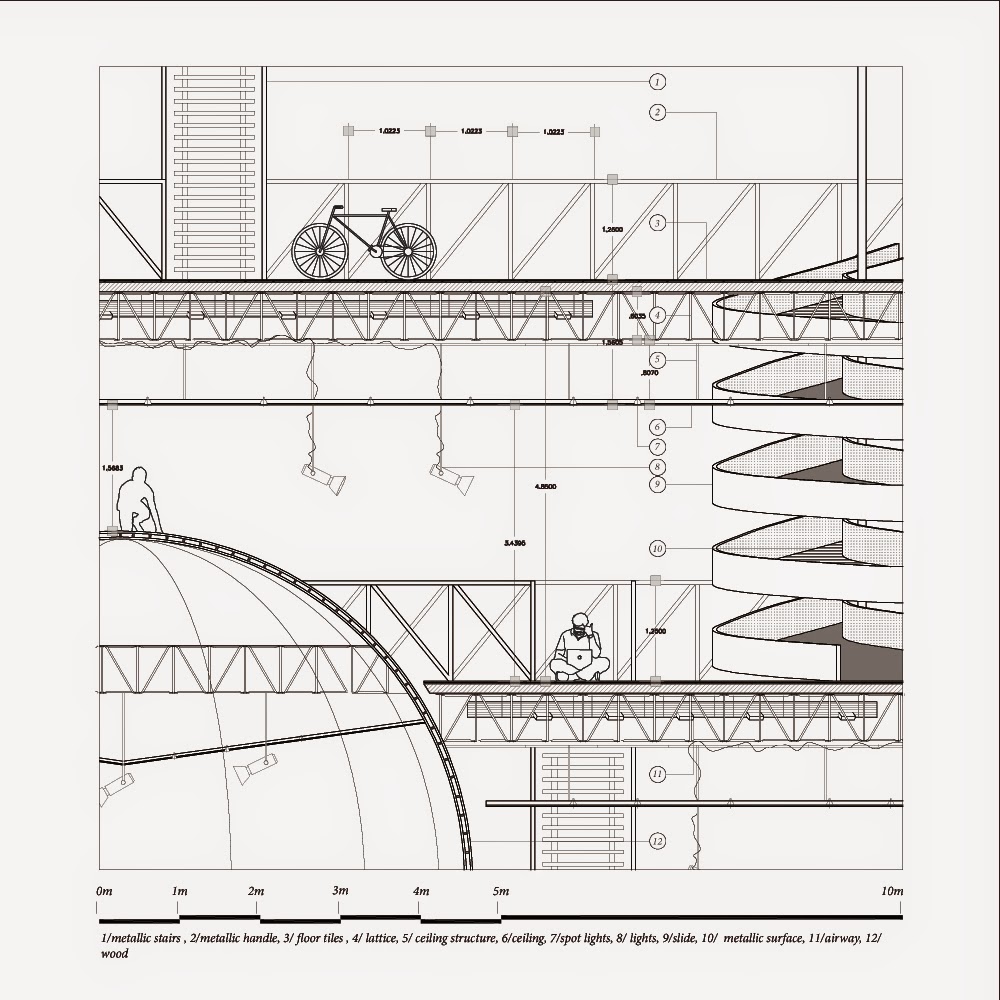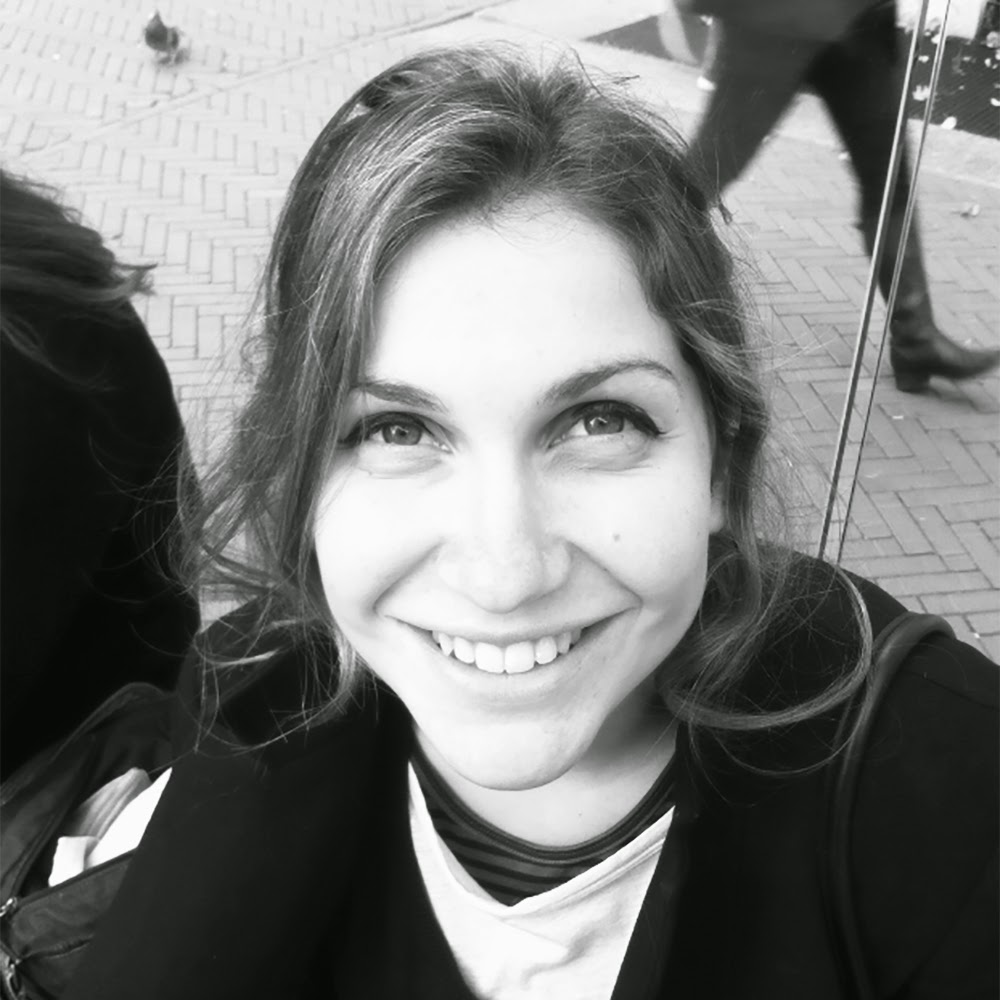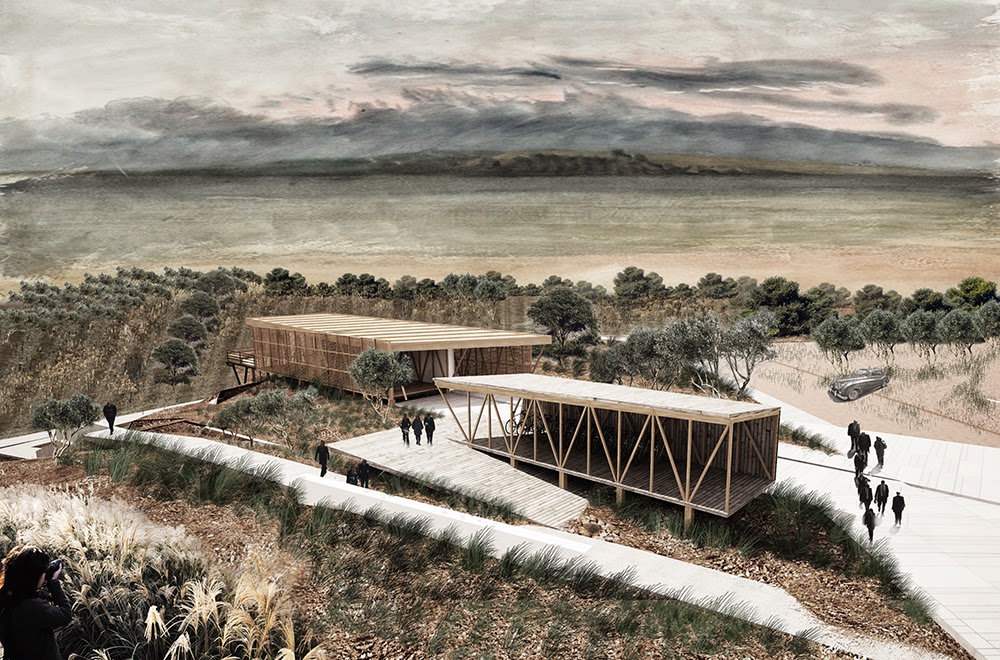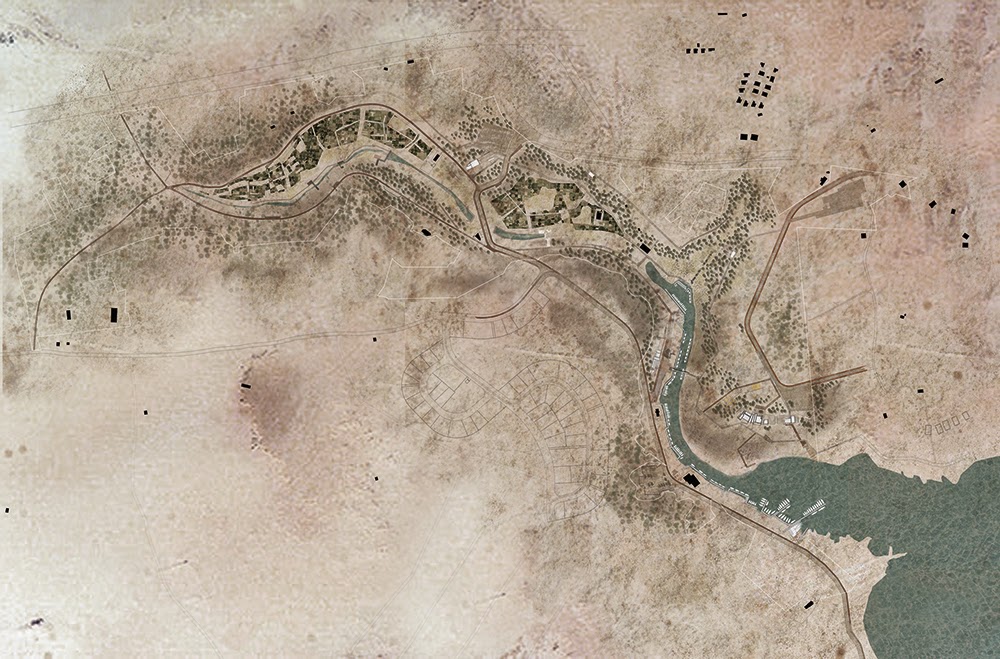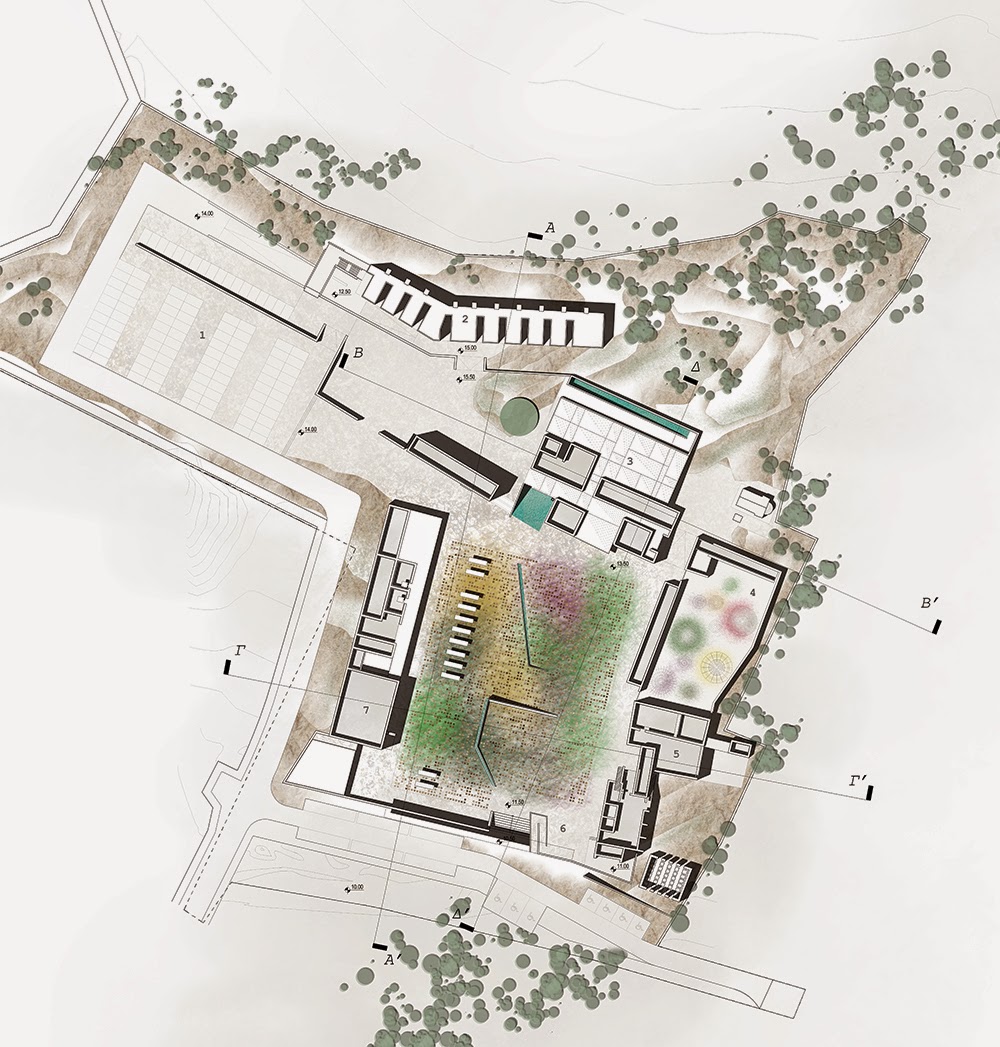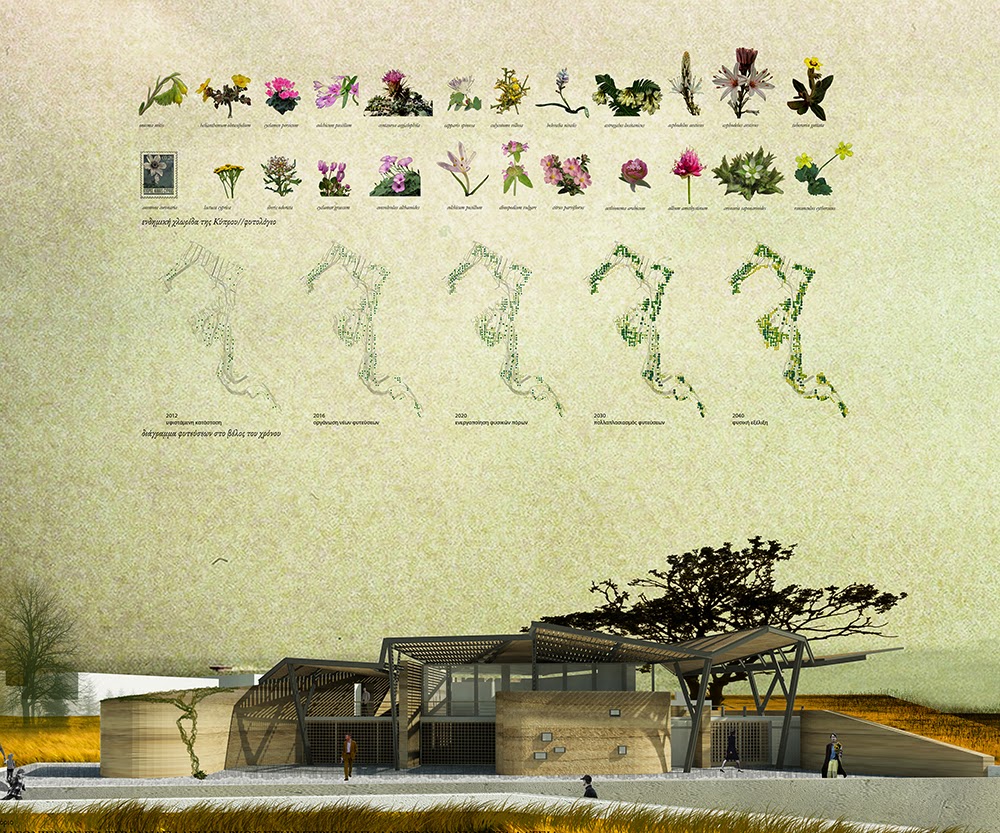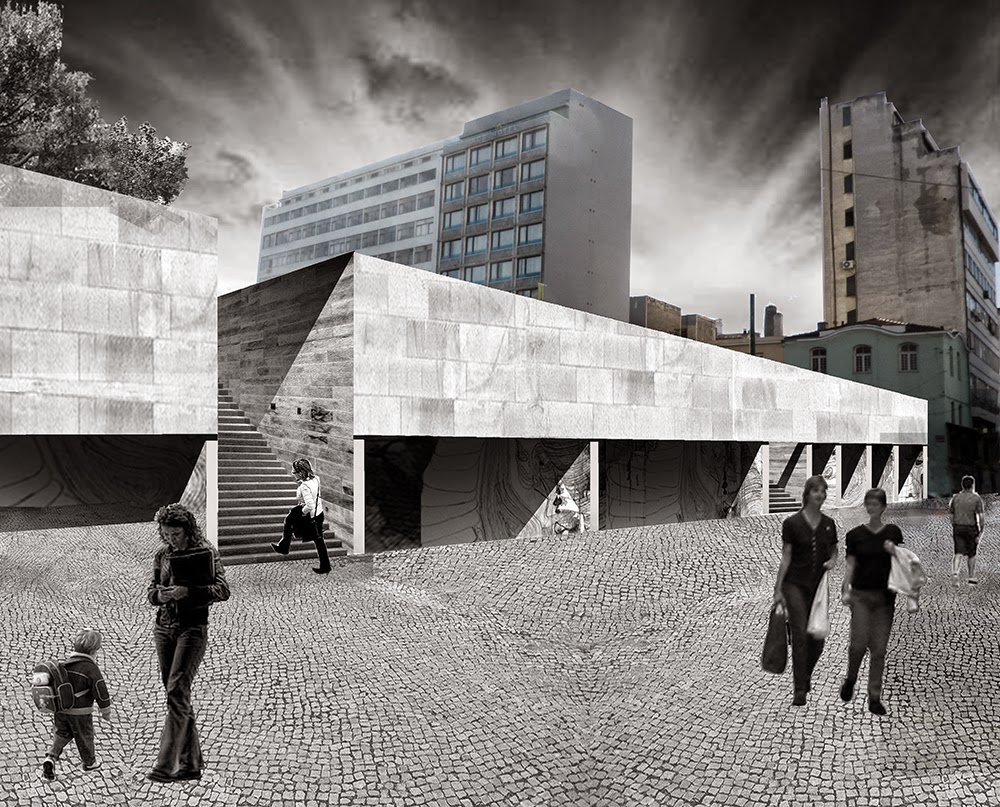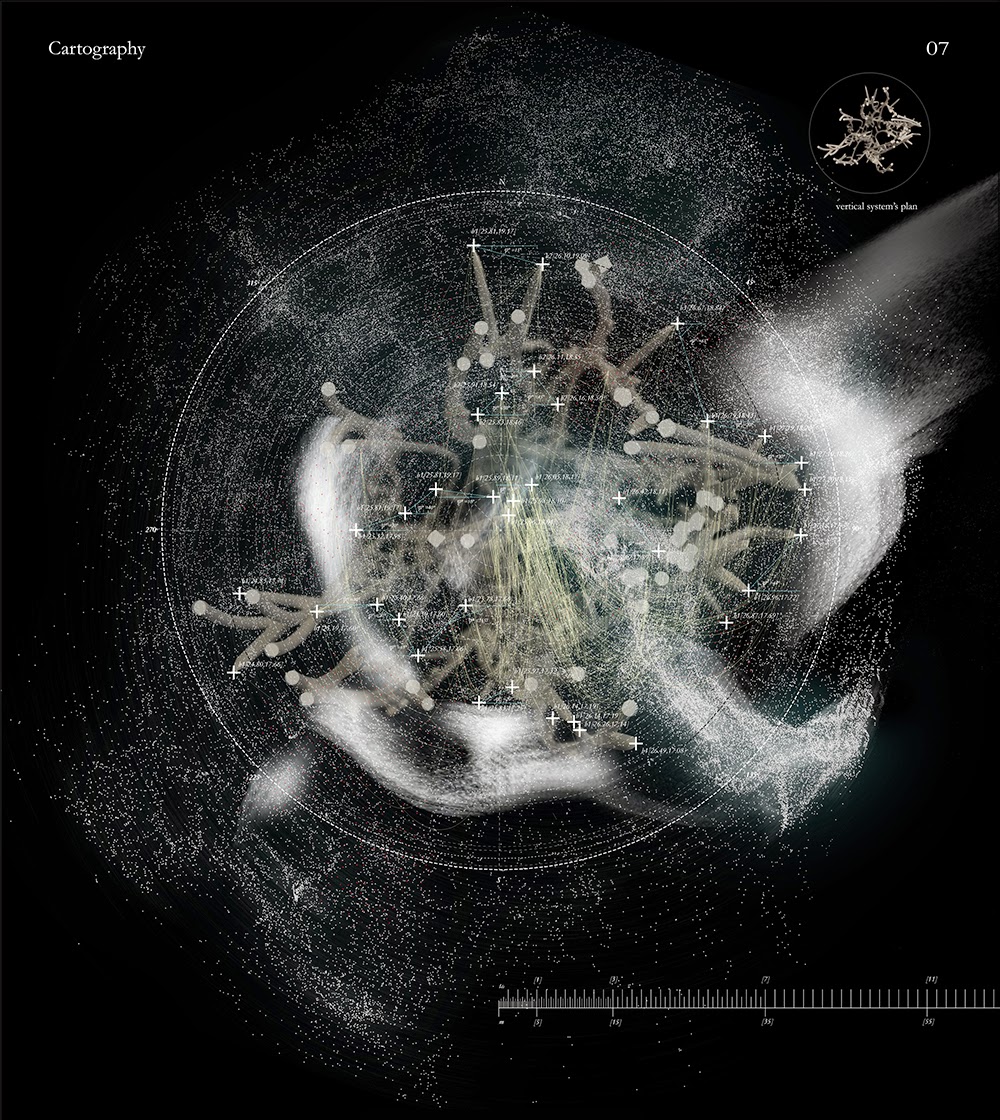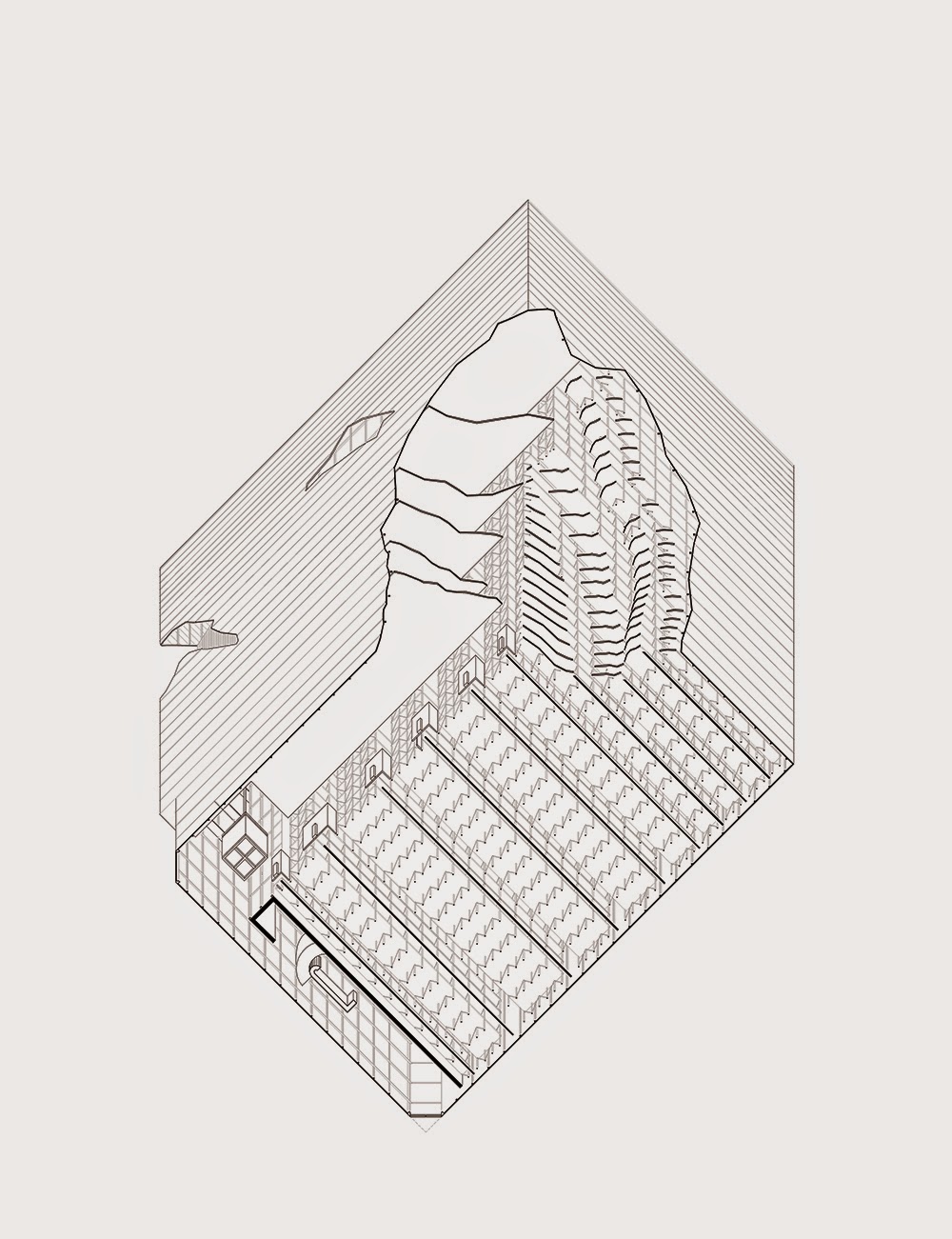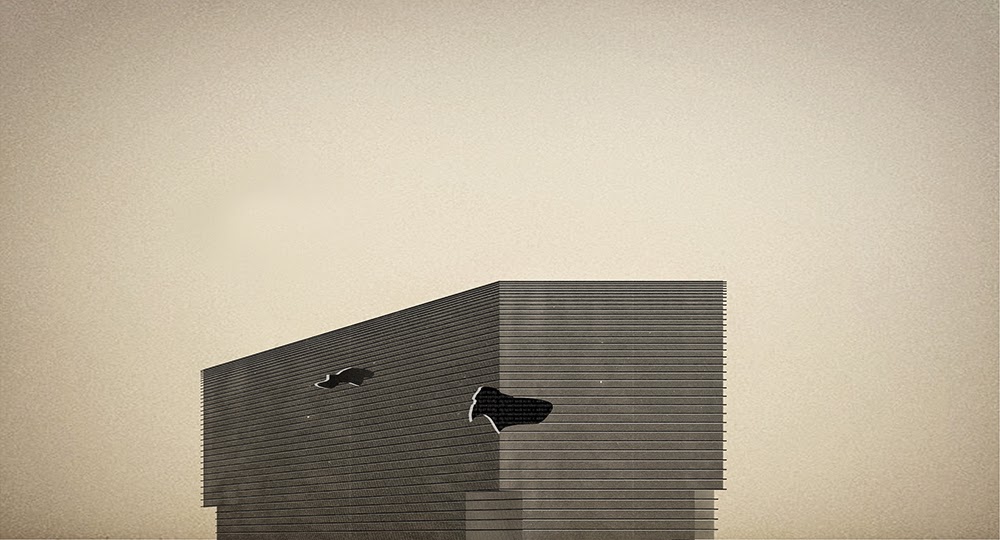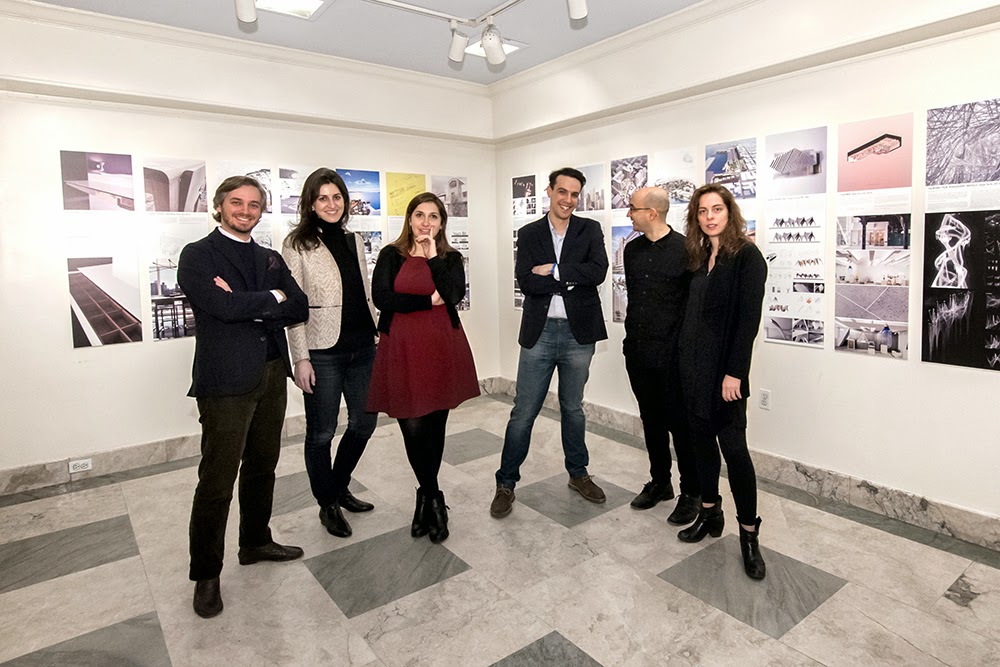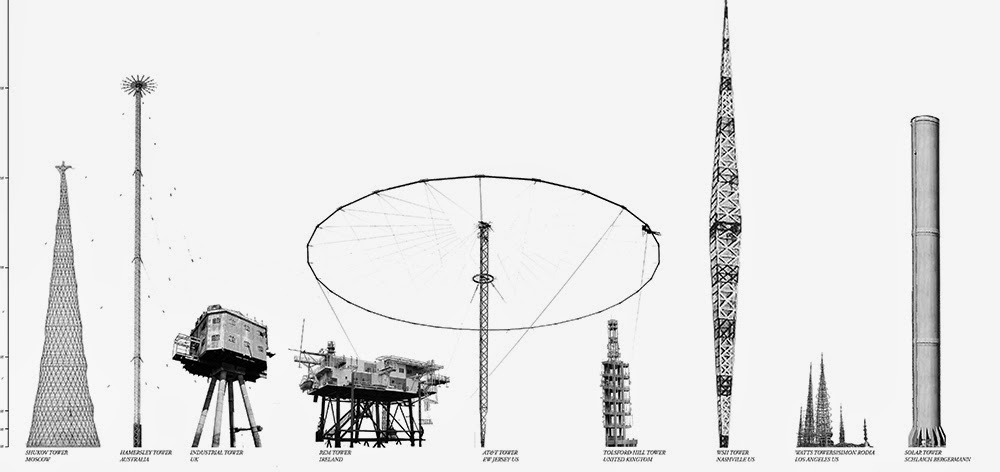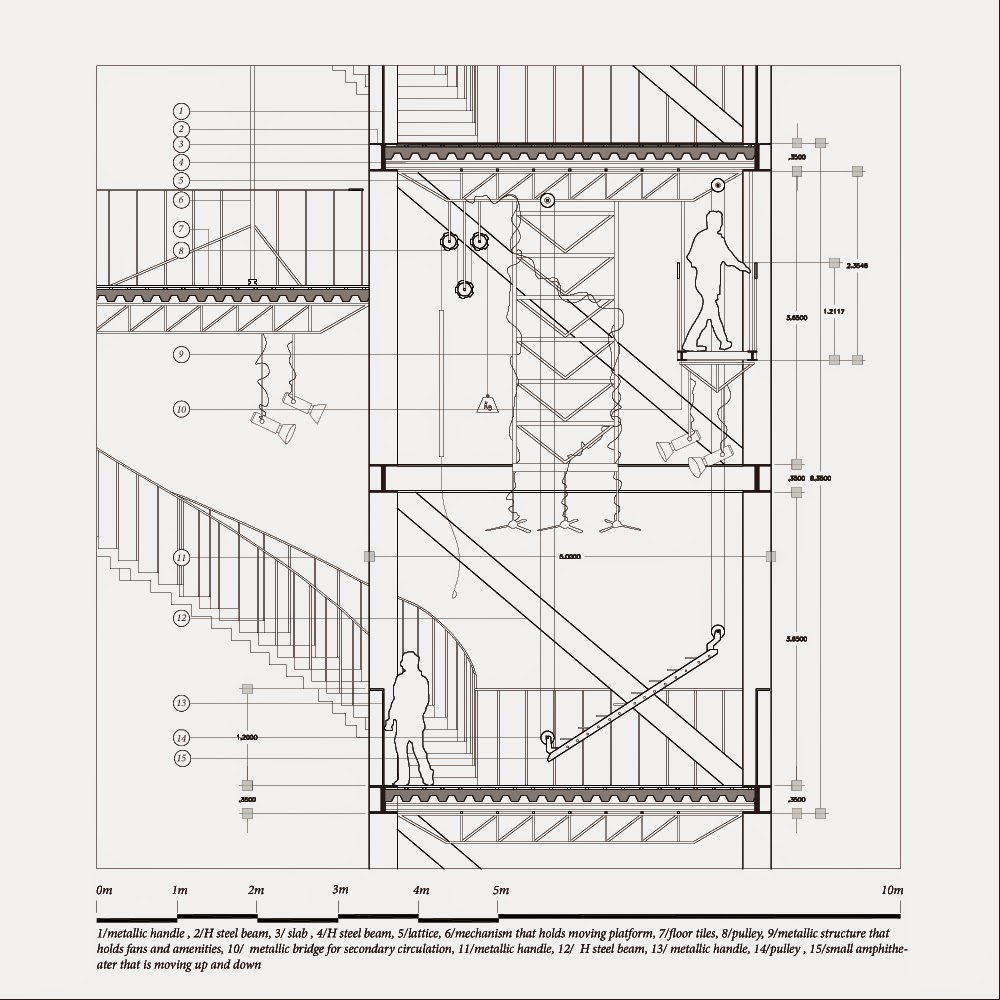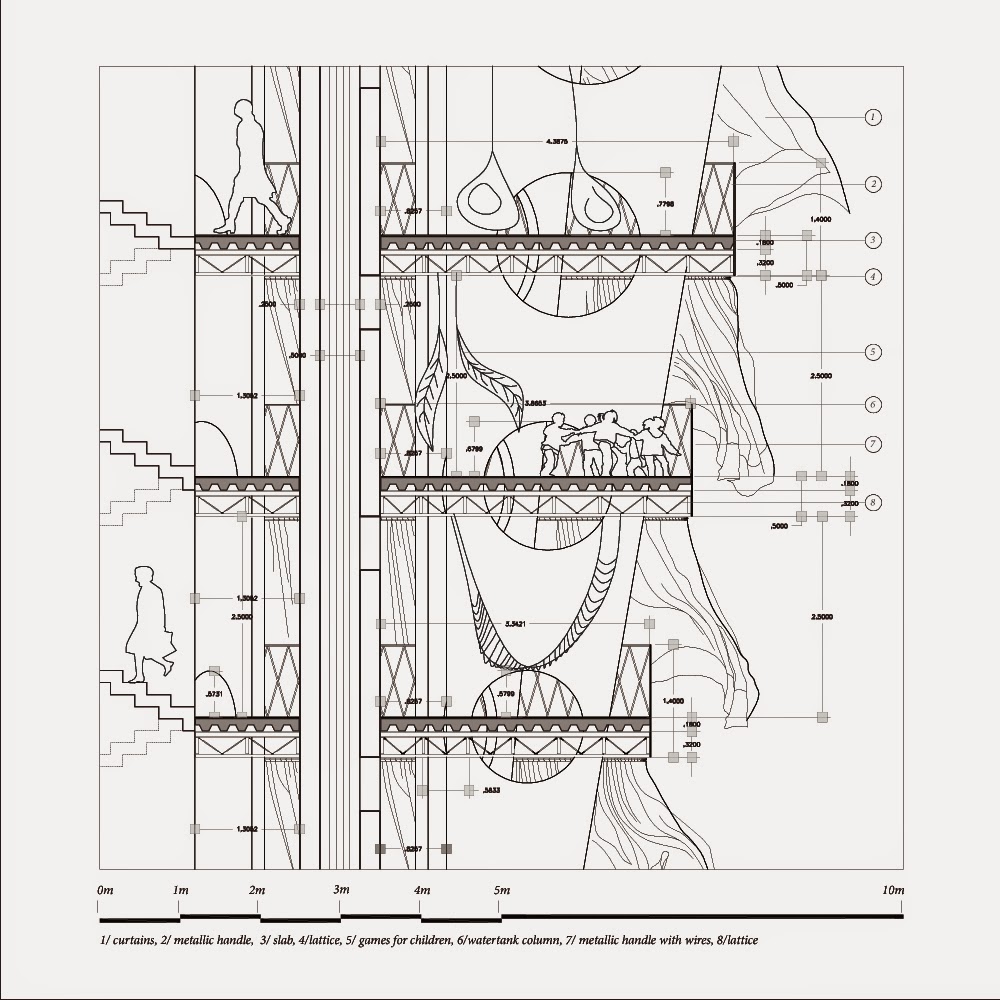Evita Fanou is a New York-based architect. She holds a MSc from Columbia University after graduating from the AUTH in Greece. She has participated in several architectural competitions and exhibitions and she is the co-founder of the Greek Institute of Architects in NY [GIANY]. Evita specializes on the way performative architecture has distanced itself from content and context and focuses on human experience. She is currently working as an Architectural Designer for RAFT Architects, specializing in educational public projects in New York.
#1. Describe your architectural background with a few words.
I graduated from the Architecture School of Aristoteleio University of Thessaloniki on 2009 and right after that I worked for two years in Athens, mostly on open architectural competitions. This was a great experience and a way to create a strong portfolio for my Graduate School applications. Three of the competitions were in Cyprus and two of them in Athens. In one of them, my team (with D.Chatzopoulos, V.Ieridis, A.Michael, E.Mitakou, A.Raisi, A.Zomas) was awarded the first prize for a fishing harbor and educational park proposal in Liopetri, which now three years later is starting to get built. The other two, a park in Latsia and the renovation of the Germanina complex, were shortlisted and awarded Honorable mentions. Back then I was also participating in competitions organized by the Unification of Archaeological Spaces in Athens, where my teams were awarded two First Honorable Mentions, first at the Theater Square Design Competition (with M.Fytou) and ATHENSX4 (with C.Hondos, M.Fytou, E.Giakoumaki, A.Stathopoulou, A.Kapsimalis, K.Stoforos). On 2011 I arrived in New York to start my graduate degree. At Columbia University my theoretical background and design skills were enriched while working with educators like Bernard Tschumi, Mark Wigley, Kersten Geers, Francois Roche and Juan Herreros. During my studies at Columbia University I focused on the way parts of the city are isolated for political, social or natural reasons and how this creates archipelagos of disconnection within the city. By collaborating with these professors, I started using representation as a way to describe and understand a project.
#2. After your graduation, how did you make up your mind on your next step it? What was it about?
After graduating from the Aristotle University of Thessaloniki, I was sure I wanted to pursue a Master Degree in Architectural Design but I was unsure of the program that would suit me best. After lots of research I decided that I would apply for a postgraduate masters degree in a university based in New York. I wanted to come to New York because I believe that an architect has to always be connected to the city. Architectural education is not limited in the walls of an institution but is evolving everyday in the city and society. What excited me about New York City is the fact that being different is actually an advantage, and that everyone is different in his or her own way but everyone lives together. Furthermore, New York has a special urbanity; its density was formed from economic and geographic reasons. Manhattan is an island with natural limits, so the city can only grow vertically which creates an extraordinary urban fabric that always fascinates me. Columbia University was a choice I made, first in relation to the city but also for the great professors who either live in the city or visit from all over the world and for the very flexible curriculum that helped me to customize my Master Program in the direction I wanted. Studio X, research laboratories, professors and students create a worldwide network of the University, that reflects on my opinion on the architect of our generation, the architect-citizen of the world.
#3. What were the difficulties you encountered and the opportunities that came along with your choices?
Any trip or change of environment is a challenge. There are difficulties in every step and opportunities come along with them. The most interesting thing is when difficulties become opportunities. Coming from a Greek university, there were a lot of difficulties in adjusting to the time schedule, pressure and competition of an American academic environment, which is only the preparation for what happens later in an architectural office. Being different though gives you tons of opportunities. European architects have strengths that I discovered inside this context, and for me the most helpful one is the connection of European architects with history. We grew up in a historic context and cities historically charged. We studied it in our architecture schools, and we made it part of our design. For a European architect design derives from the historic context and the main concept starts as a process of an already visited idea. This is not obvious at all in America where design starts with innovation. I found that knowledge of architectural history helped me to compensate for my difficulties with, for example, parametric software that American architects are more familiar with.
#4. What is your current occupation and in what way is it an asset to your professional life?
Is it close to what you imagined architectural practice to be? Today I am working with RAFT Architects, an emerging, international architecture practice based in New York City, led by Anthony Fieldman. We just finished designing a new public primary school in Queens; a very demanding project that will start getting build this July and our next projects are two hotels, one in Brooklyn and one in Jeddah. The studio has a strong educational and hospitality portfolio and many awarded participations in architectural competitions worldwide. At the same time, with five colleagues we founded The Greek Institute of Architects in New York [the GIANY organizing committee consists of architects Constantine Bouras, Electra Kontoroupi, Foteinos Soulos, Dimitra Tsachrelia, Ioannis Oikonomou and myself], an almost two year old initiative that aspires to bring together Greek architects who live and practice in New York and that currently numbers more than 80 members. We are very interested in empowering the voice of Greek architects in New York through exhibitions, lectures and discussions. We just organized the GRE>NYC exhibition at the Consulate General of Greece in New York and a lecture by Elia Zenghelis, and we are invited by GreeceGSD to a round table discussion at Harvard GSD in the near future to talk about the Institute and its idea as a collective initiative. I believe architectural practice to be something in between design, curating, collecting experiences, sharing knowledge, writing, traveling and everything that connects architects with the world. This process of creating thinking and acting is what I understand architecture to be. RAFT and GIANY are my ways of being in the front lane of innovative design but at the same time stay close to the architectural community and the public, and work at the edge of the profession. By curating, organizing workshops and coordinating lectures I strongly feel that I keep myself connected with my generation of architects. Since GIANY is a collaborative effort the picture would be more complete with some comments from all Founding members (Constantine Bouras, Electra Kontoroupi, Foteinos Soulos, Ioannis Oikonomou, Dimitra Tsachrelia): CB: `The idea for the creation of GIANY emerged in 2013, based on the need for an association that would play a central role within the Greek architectural community in New York, as a platform for sharing architectural ideas and advocating for the work of Greek architects`. Constantine Bouras studied Architecture at the National Technical University of Athens (2008) and received a Master of Architecture in Urban Design from the Harvard Graduate School of Design (2011). He has worked in architectural firms in Athens, Milan and New York and is currently a project architect at Leroy Street Studio. EK: `GIANY refers to a young generation of Greek architects that identify themselves as citizens of the world. They always bear their Greek identity but at the same time they can live and design/create anywhere in the world`. Electra Kontoroupi holds a Masters in Advanced Architectural Design from Columbia University (2012) after having previously completed her Architectural Diploma at the National Technical University of Athens (2011). She focuses on the design of art fairs, art exhibitions and galleries. She currently works at studioMDA | New York. FS: `The initiative of GIANY is promising and highly accepted across the New York Architects and I believe that it can work as a platform for an ongoing discussion among Architects - Greeks or not`. Foteinos graduated from University of Patras where he did his undergrad and from University of Columbia University of New York in 2010 with a Master degree in advanced architectural design. He currently works at SHoP Architects as Associate specialized in facade design. IO: `In my view, the most important aspect of GIANY is the emergence of yet another opportunity to meet, not only with each other, but also with people that want to acquaint themselves with Greek architecture. Architecture is a work full of challenges; if it could also become a cause of pleasant meetings, so much the better.` Ioannis Oikonomou is an architect urbanist who studied at the Polytechnic School of Aristotle University of Thessaloniki and the National Technical University in Athens. He has established the award winning oiio Architecture Studio, based in Athens and New York, which has received six international design competition prizes. DT: `Through its actions, GIANY aspires to create a common `space` for the Greek architects of New York as a field of interaction and culture`. Dimitra Tsachrelia received her Ms.AAD from Columbia University in 2008, where she was awarded the Honor Award for Excellence in Design after receiving her Diploma in Architecture from the Patras University School of Architecture in Greece in 2007. She is an Associate Architect at Steven Holl Architects.
#5. What piece of advice would you give to someone that would like to follow your steps?
Although I don`t feel ready to advice anyone, I would suggest to everyone to form collaborations, and work in teams. I believe that architect`s profession is connected with the human studies, the city and the society, and that it requires dialogue, debate and arguments from people of many different disciplines that work for the same goal. Although I had amazing professors that inspired me, I can say that every colleague and coworker that I have ever collaborated with has equally inspired me. So I would advice anyone to keep growing inside teams. I believe that our generation of architects will be focused more on collecting and sharing than the previous ones.
Evita Fanou recently organized the `Intelligent Users, Intelligent Cities` workshop, at the Smart Cities symposium, during the 9th International Conference on Intelligent environments in Athens and has been invited to sit on a number of juries and reviews at Cooper Union, Columbia University and Pratt Institute is a regular speaker at events, symposia and conferences on the topic of contemporary critical design and architecture. Evita`s work has been featured in a number of international magazines such as arch-daily, Domus, Architectural Review, The Draftery etc, and her work has been exhibited in architectural exhibitions in Thessaloniki, Athens, New York, Rio de Janeiro, Barcelona, Nicosia and Boston.
ARCHIPELAGO ( Columbia Univeristy prof.Juan Herreros )
LIOPETRI COMPETITION – FIRST PRIZE AWARD (with D.Chatzopoulos, E.Mitakou, V.Iereidis, A.Michael, A.Raisi, A.Zomas)
GIANY – THE GRE>NYC EXHIBITION

